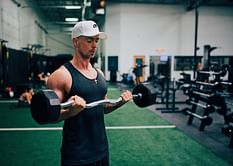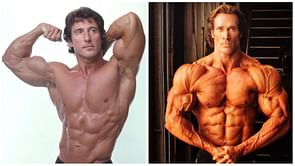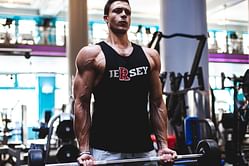Everyone here at some point of time must have desired of strolling in their street block, flaunting their shredded or buffed biceps & triceps bulging out from their tank tops. Wait, but only desiring such scenario won’t help much. You got to work and earn them in the first place.
Besides giving you a charismatic look, arms are also a parameter to show how powerful you are. They are in fact the most versatile organs of your body as they provide assistance in all your basic daily activities and help in almost all the upper body workouts as well.
Sportskeeda is here with articles and blogs comprising of arm workout tips and the anatomy of the forearms, biceps and triceps, their function and location in the body.
The human arms are divided into 2 basic regions namely upper arms and forearms, both are connected by vital elbow joint and the latter end of forearm is connected to the hand by wrist joint.
Upper Arms
Starting with the upper arms, it is divided into 2 main subdivisions- anterior compartment, located in front of your humerus and posterior compartment, located behind the humerus.
Anterior compartment: This region has 3 main muscles-
- Biceps brachii: Or in other terms referred to as your biceps. This muscle contains two heads. One starts at the front and the other at back of your shoulder before flowing together at your elbow while managing the 4 functions- flexion, extension, abduction and adduction.
- Brachialis: This muscle acts as a base for your biceps. It is a kind of bridge between the humerus and ulna, one of the main bones of your forearm.
- Coracobrachialis: This muscle is located near your shoulder. It helps to stabilize your humerus within your shoulder joint.
Posterior compartment: This section of upper arm is made up of 2 muscles-
- Triceps brachii: Or in other terms referred to as your triceps. This runs along your humerus and allows for the movements of your forearm. Also helps in stabilizing your shoulder joint.
- Anconeus: This small sized muscle is a kind of extension to your triceps as it helps triceps to extend your elbow and rotate your forearm.
Lower Arms, or Forearms
Now comes the forearm section. This region has muscles overlapped in layers and divided into basically 2 compartments namely posterior and anterior, alike the divisions in the upper arms.
Anterior compartment: This comprises mainly of 3 layers- superficial, intermediate and deep layer, in the order as the name suggests.
- Superficial layer consists of the muscles such as flexor carpi ulnaris, pronator teres and palmaris longus, with the sole function of flexion and adduction of the wrist.
- Intermediate layer has only one muscle- flexor digitorum. The muscle flexes your second, third, fourth, and fifth fingers.
- Deep layer of the anterior compartment contains the flexor pollicis longus and flexor digitorum profundus, with the function of thumb and wrist flexion respectively.
Posterior compartment: This section of the forearms comprises of only 2 layers- superficial and deep, but the constitution in these layers is more complicated and intense as compared to its anterior counterpart.
- Superficial layer consists of the muscle like brachioradialis, extensor carpi radialis longus and Extensor digitorum. When you flex your forearm or extend your hand at your wrist joint, it is these muscle who are at work.
- Deep layer of the posterior compartment consists of the muscles like supinator, abductor pollicis longus, extensor pollicis brevis and extensor indices. These muscle do some vital functioning such as extending your index finger and thumb.These muscles allows your forearm to rotate outward to your palm faces up.
This was the anatomy of our arm. Sportskeeda will make sure that you develop each muscle of the arm by penning effective workout tips, which if followed, will bear guaranteed results.









